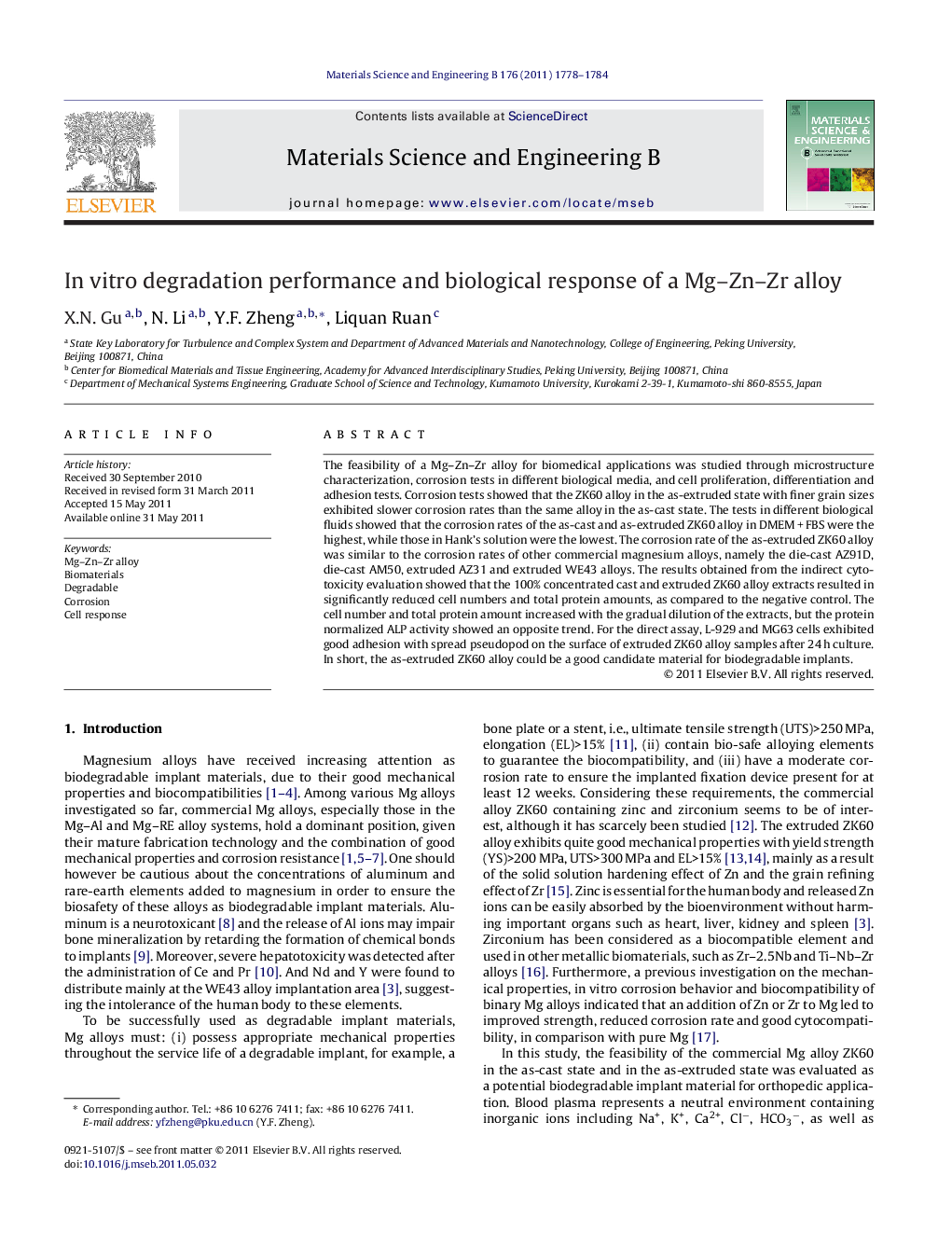| Article ID | Journal | Published Year | Pages | File Type |
|---|---|---|---|---|
| 1529549 | Materials Science and Engineering: B | 2011 | 7 Pages |
The feasibility of a Mg–Zn–Zr alloy for biomedical applications was studied through microstructure characterization, corrosion tests in different biological media, and cell proliferation, differentiation and adhesion tests. Corrosion tests showed that the ZK60 alloy in the as-extruded state with finer grain sizes exhibited slower corrosion rates than the same alloy in the as-cast state. The tests in different biological fluids showed that the corrosion rates of the as-cast and as-extruded ZK60 alloy in DMEM + FBS were the highest, while those in Hank's solution were the lowest. The corrosion rate of the as-extruded ZK60 alloy was similar to the corrosion rates of other commercial magnesium alloys, namely the die-cast AZ91D, die-cast AM50, extruded AZ31 and extruded WE43 alloys. The results obtained from the indirect cytotoxicity evaluation showed that the 100% concentrated cast and extruded ZK60 alloy extracts resulted in significantly reduced cell numbers and total protein amounts, as compared to the negative control. The cell number and total protein amount increased with the gradual dilution of the extracts, but the protein normalized ALP activity showed an opposite trend. For the direct assay, L-929 and MG63 cells exhibited good adhesion with spread pseudopod on the surface of extruded ZK60 alloy samples after 24 h culture. In short, the as-extruded ZK60 alloy could be a good candidate material for biodegradable implants.
► The feasibility of Mg-Zn-Zr alloy as a potential biodegradable implants. ► As-extruded Mg-Zn-Zr alloy exhibits slower corrosion rate than the one in as-cast state. ► As-extruded Mg-Zn-Zr alloy shows comparable corrosion rate as other commercial Mg alloys for biomedical application. ► As-extruded Mg-Zn-Zr alloy shows good cytocompatibility.
